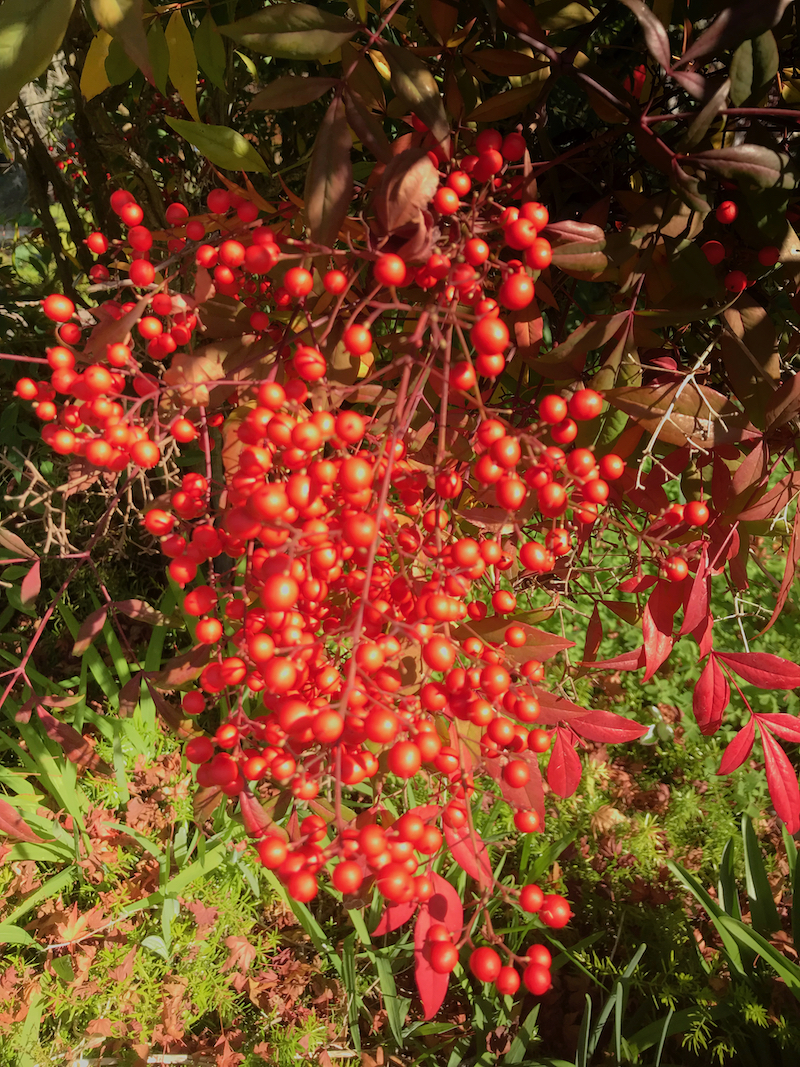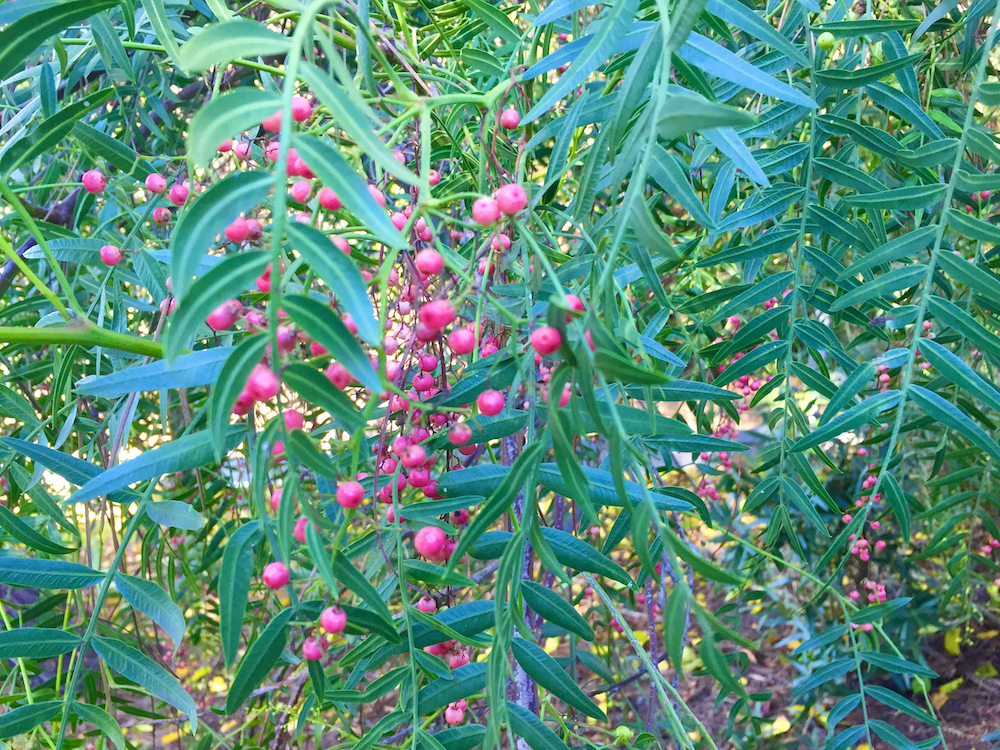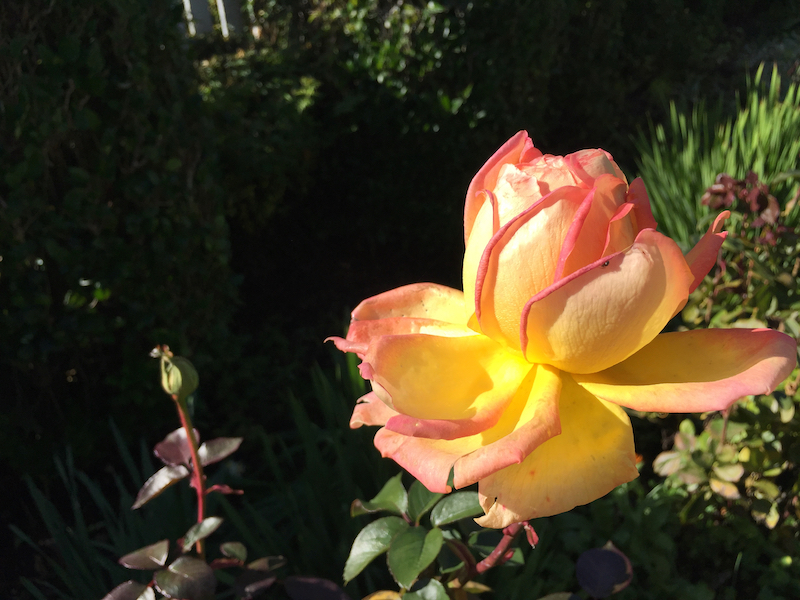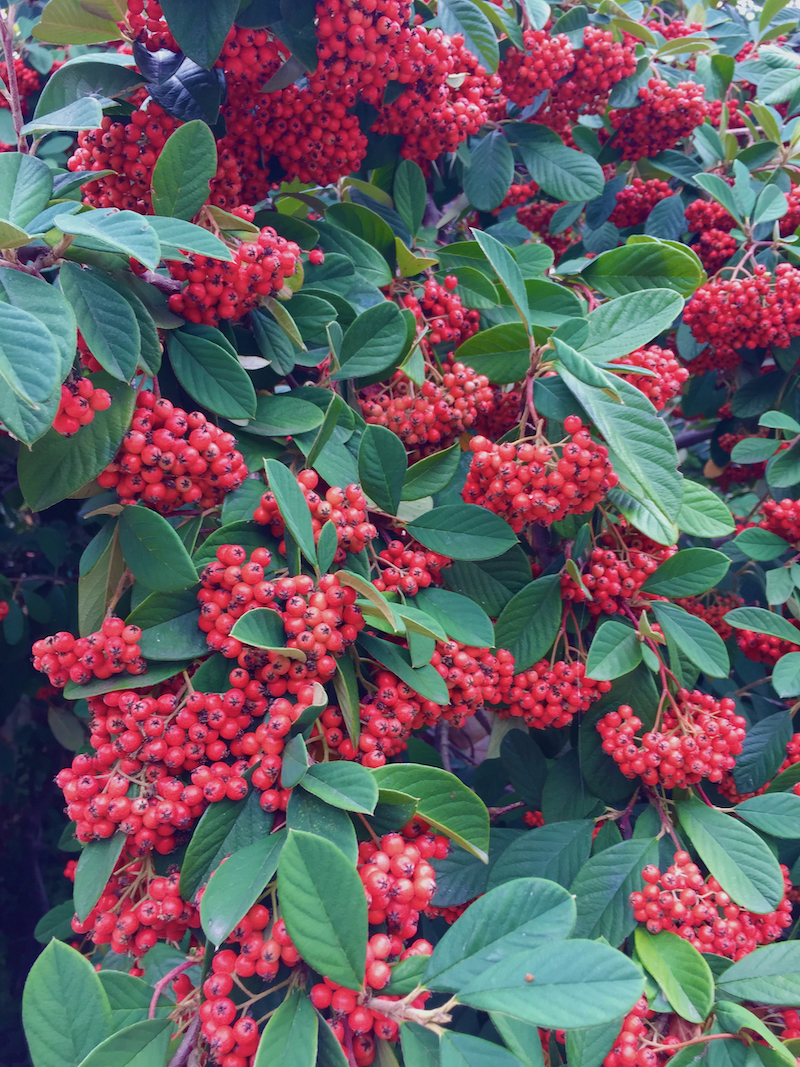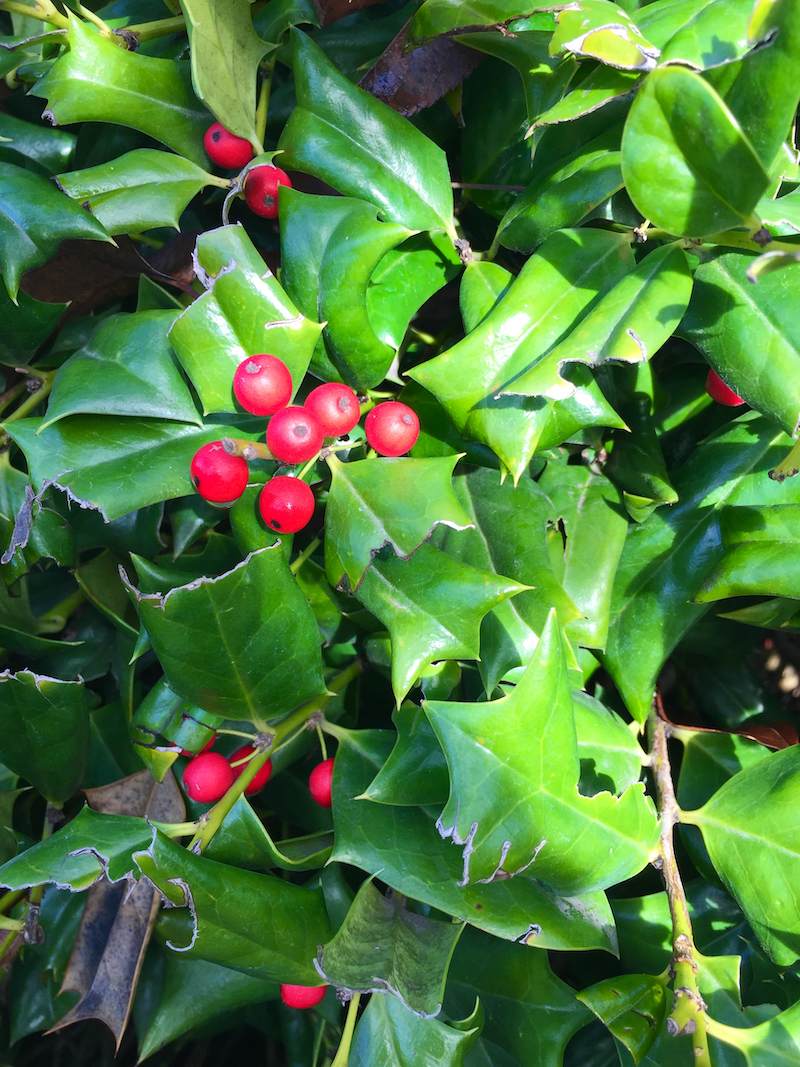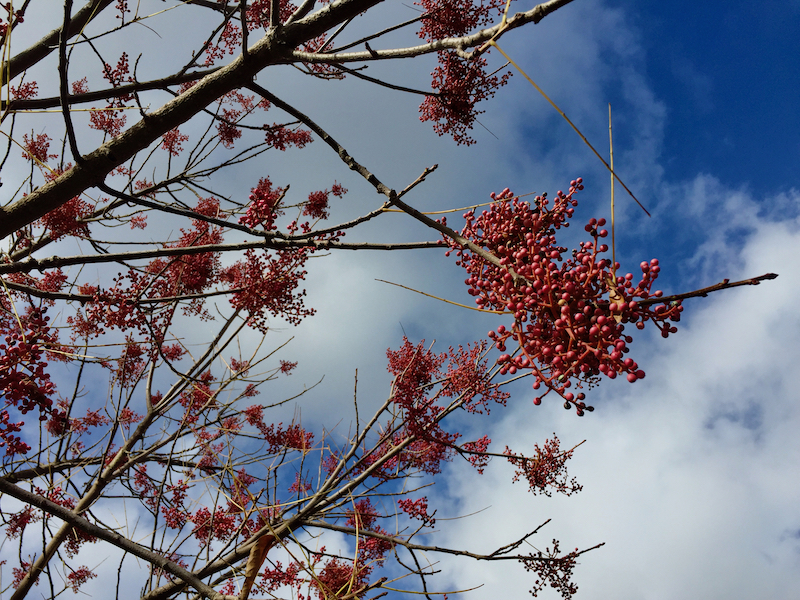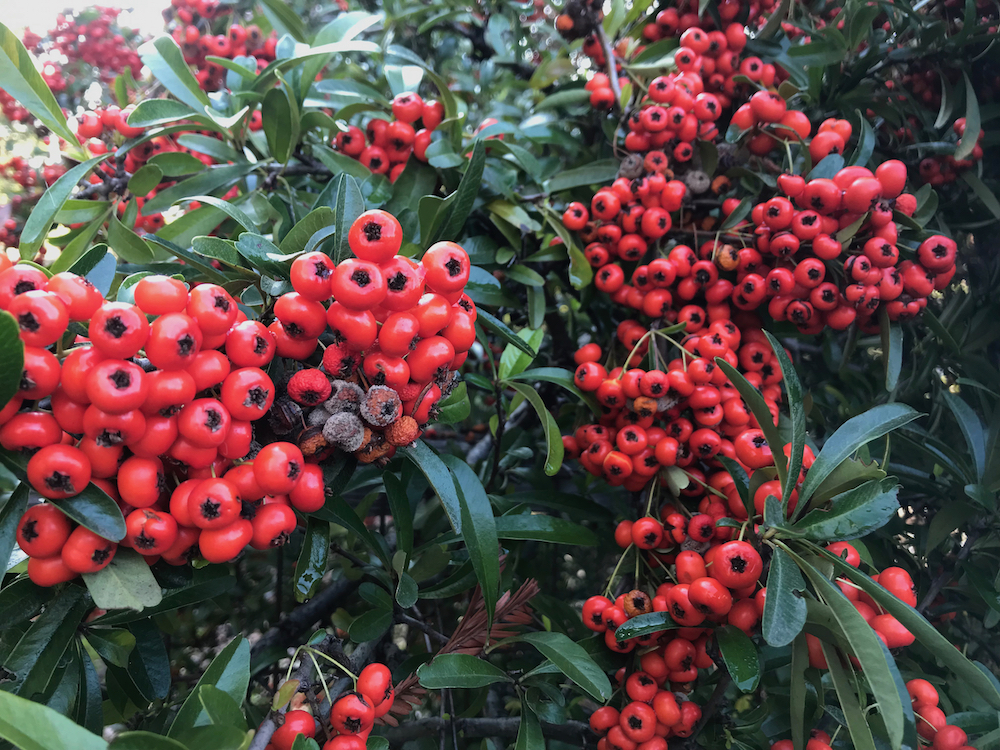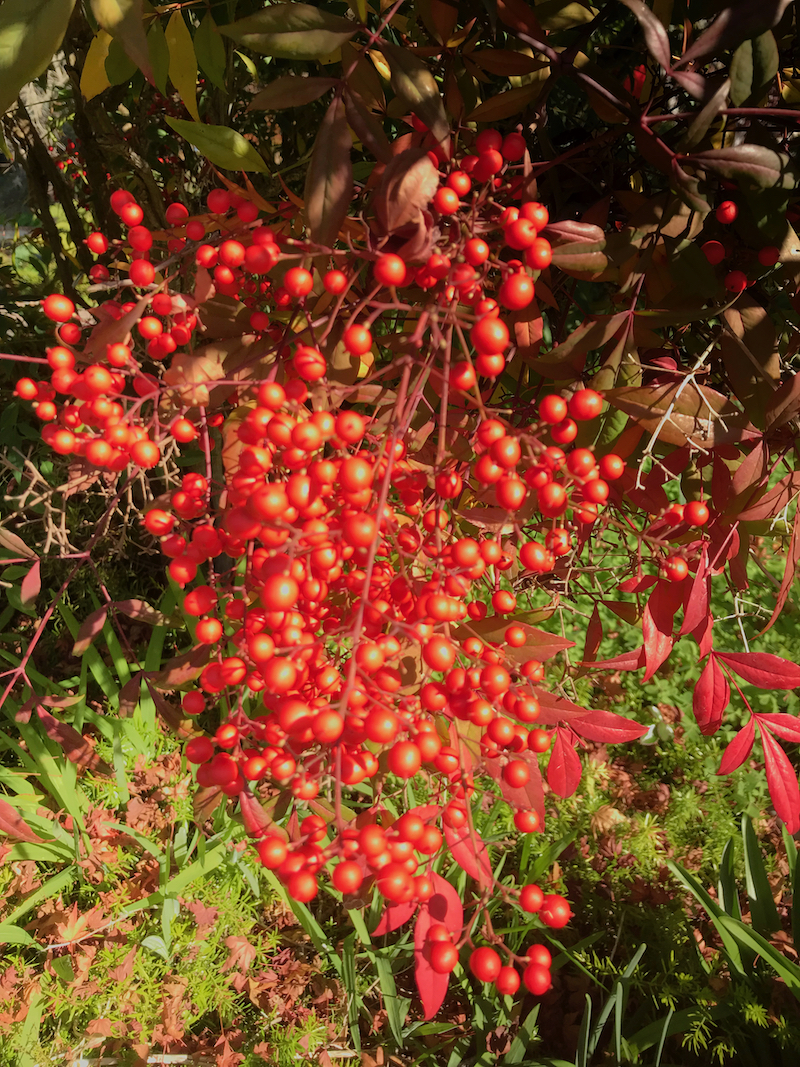By Cynthia Brian
*To me, the garden is a doorway to other worlds; one of them, of course, is the world of birds. The garden is their dinner table, bursting with bugs and worms and succulent berries.” Anne Raver
Birdy, it’s cold outside.
Deciduous trees are barren of leaves, autumn perennials have finished their blooming cycle, and few flowers adorn the landscape. The glistening ornaments that embellish the foliage are a gastro delight for birds.
Winter has arrived and with it the beautiful berries that are a vital source of food for birds as well as a traditional embellishment to Christmas wreaths and garlands. When we think of berries, we normally conjure images of blackberries, blueberries, raspberries, or strawberries, all grown and harvested in the warmer months. Winter berries are different, and although they are a small fleshy fruit, they are mostly enjoyed by wildlife, with a few edible exceptions eaten by humans.
My garden boasts a plethora of winter berries that encourage my feathered friends to hang around for the holidays. Finches, mockingbirds, robins, sparrows, jays, quail, doves, bluebirds, and orioles are attracted to the many varieties of berries that will provide their nutrition during a cold and stark winter. A few of my favorites include pyracantha, cotoneaster, viburnum, pepper, Chinese pistache, rosehips, holly, yew, and barberry. Of these, only the pepper berries and rosehips are consumed by my family. Although pomegranates are not a berry, their jewel-red seeds called arils remind me of tiny berries and I grow them in my garden. Pomegranates are a staple of the Christmas fruit basket because of their festive holiday colors/ The arils are filled with antioxidants, potassium, fiber, vitamins, and minerals, packing a punch to keep us healthy. Add them to salads, make a chutney, or stir a splash of juice in a glass of sparkling wine for a festive, flavorful indulgence.
The pretty pink peppercorns from a California pepper tree are a gourmet’s desire. Since these trees are grown as ornamentals many people don’t realize that their berries are edible, with a fruity, spice profile that complements numerous recipes. They can be dried or used fresh. I have found the best way to grind them is with my mortar and pestle because their paper-thin husks get caught in my twist grinder. When making stews or soups, I toss the whole berry, called a drupe because it is a single seed, in the pot. If you buy pink peppercorns, be prepared to pay $10-15 per ounce. Consider planting a California pepper tree which will grow to 30 feet tall and wide if you have the room.
Although it is mid-December, my roses continue to bloom. This month I am no longer dead-heading my bushes as I want the rosehips to form.
Since roses are in the same family as apples and crab apples, the taste of rosehips mimics the tartness of crab apples. The seeds/berries of rosehips have powerful disease-fighting capabilities and are packed with vitamin C. After washing the hips, use them to make jellies, teas, syrups, soups, and desserts.
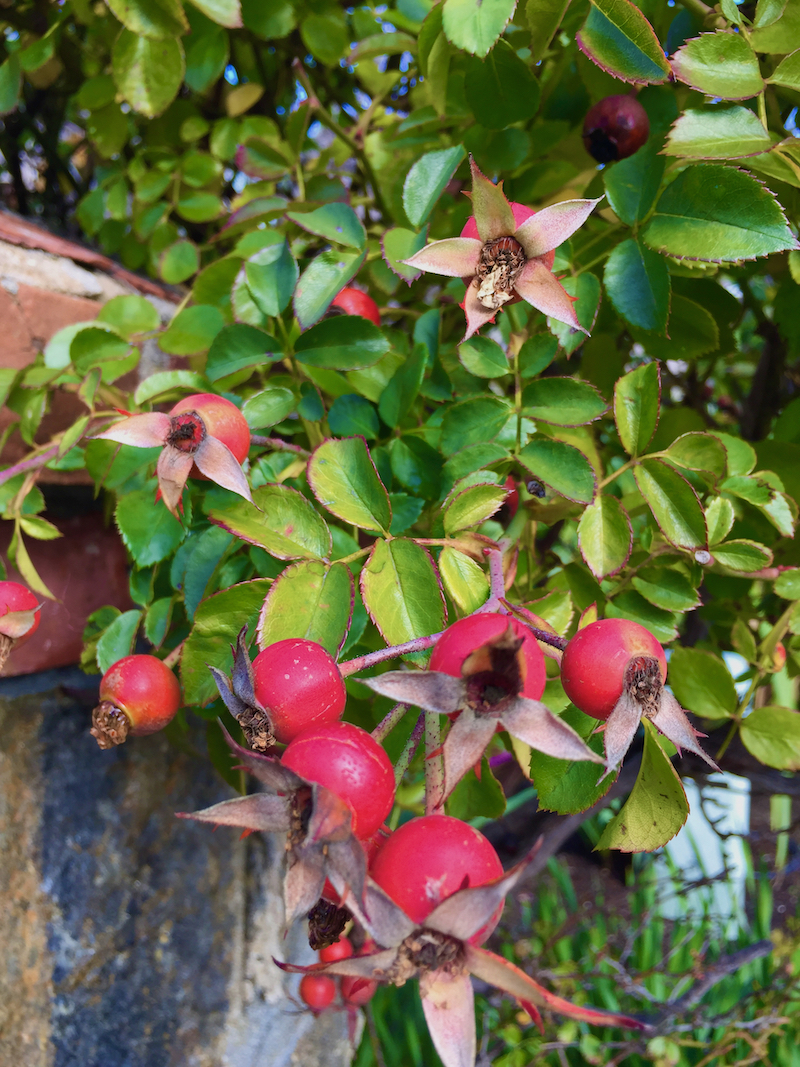 https://www.lamorindaweekly.com/archive/issue1522/Digging-Deep-with-Goddess-Gardener-Cynthia-Brian-A-berry-merry-Christmas-mostly-for-the-birds.html
https://www.lamorindaweekly.com/archive/issue1522/Digging-Deep-with-Goddess-Gardener-Cynthia-Brian-A-berry-merry-Christmas-mostly-for-the-birds.html
For the birds…
Peeking through leaves and decorating trees and shrubs, winter berries are nature’s Christmas décor. As beautiful as they are, the most critical element of growing these botanicals in your garden is the nutritional fare they provide for the birds and other wildlife during the coldest season of the year when food sources are limited. There are several other autumn ripened berry-bearing bushes or vines that still have shriveled fruit hanging, such as grape and elderberry, that can be left for the birds. Here’s a sampling of vibrant holiday berry dinners fit for the birds.
Cotoneaster emerged as a volunteer in my garden, most likely from seeds brought in by birds. It is an evergreen shrub that grows into a tree if not properly pruned sporting white flowers in spring that are a magnet for bees and rich red berries in winter that are a delicacy for birds. Deer munch on the branches which doesn’t bother the bush. Cotoneaster is fire-resistant and can be propagated from cuttings, although I have found that once one cotoneaster is in a landscape, others seem to sprout like weeds.
Holly has glossy leaves that are either serrated or spiny teeth. Because most hollies are dioecious, you’ll need to plant both a male and female for cross-pollination if you want those glorious red berries to decorate garlands, wreaths, and Christmas trees. English holly and American holly are the two species most used during the holidays. Although holly berries tend to start ripening in fall, most birds, including blackbirds and song thrushes don’t start feeding on them until late winter when other food is scarce.
Chinese pistache is one of my favorite trees for its exuberant fall color of yellows and oranges with attractive berries that metamorphose from green to aqua, to pink, and finally magenta. Birds, turkeys, quail, and squirrels go crazy for the bunches of berries that hang from the branches. I add a few sprays to my Christmas tree whenever the fowl and squirrels are kind enough to leave me a few bunches.
Pyracantha may be the preferred winter staple of robins. Birds flock to the orange-red berries called pomes, eating so many that they seem intoxicated. Known as firethorns, pyracantha is a fast-growing plant with sharp thorns. Volunteers sprout in unusual locations thanks to the birds spreading their seeds. Keep pyracantha pruned and use branches with berries in holiday arrangements.
Viburnum shrubs and hedges add beauty to any garden. They produce pinkish-white flowers that bloom from spring until late fall, depending on the species. Birds love munching on berries ripening in winter with colors that are black, blue, purple, bright red, neon pink, and even yellow. Some species are edible by humans, but other species can be toxic. Unless you know that the viburnum you planted is edible, leave the berries to the birds.
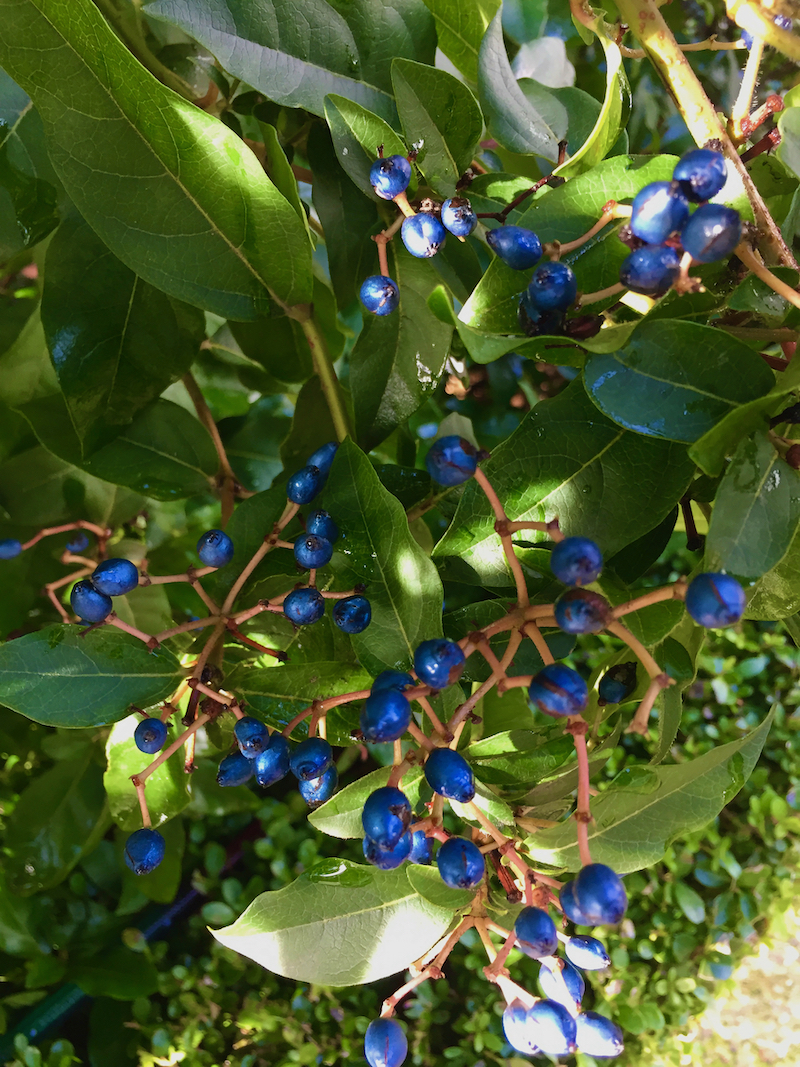 https://www.lamorindaweekly.com/archive/issue1522/Digging-Deep-with-Goddess-Gardener-Cynthia-Brian-A-berry-merry-Christmas-mostly-for-the-birds.html
https://www.lamorindaweekly.com/archive/issue1522/Digging-Deep-with-Goddess-Gardener-Cynthia-Brian-A-berry-merry-Christmas-mostly-for-the-birds.html
Yew berries red flesh called arils are sweet and safe for birds. The arils provide nutrients needed by the flyers. The seed inside is deadly, and birds know to discard it. Often called the Tree of Death, all parts of the yew tree are poisonous except the arils. The highly poisonous taxane alkaloids of the yew have been developed as anti-cancer drugs.
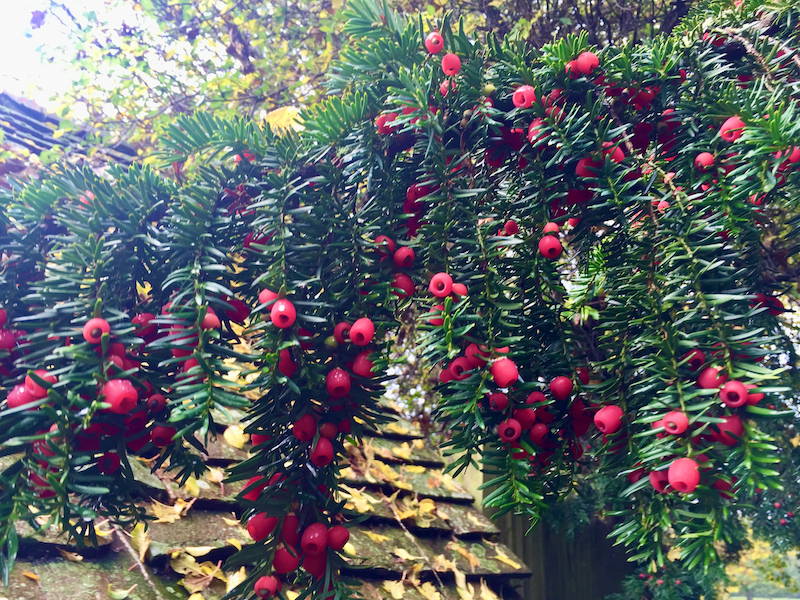 https://www.lamorindaweekly.com/archive/issue1522/Digging-Deep-with-Goddess-Gardener-Cynthia-Brian-A-berry-merry-Christmas-mostly-for-the-birds.html
https://www.lamorindaweekly.com/archive/issue1522/Digging-Deep-with-Goddess-Gardener-Cynthia-Brian-A-berry-merry-Christmas-mostly-for-the-birds.html
Not for the birds…or any animal
Nandina adds multi-season interest to any garden with its nectar-rich white flowers that attract pollinators followed by clusters of green berries that ripen to shiny bright red in late fall. The lacy foliage emerges as purple, then turns green, then changes to red and purple throughout the year. As much as I love this ornamental bush, it is important to know the berries are deadly to birds, wildlife, and domestic animals. Most birds innately avoid this plant, but the voracious eaters, cedar waxwings, are susceptible to imbibing until intoxicated. The berries contain cyanogenic glycosides that convert to hydrogen cyanide when ingested.
WARNING: When planting berry-bearing bushes, please be cognizant that most provide wildlife forage but may be toxic, poisonous, or even deadly when consumed by humans. Never put any plant substance in your mouth unless you are certain that it is edible.
There is still time to give the gifts that keep on giving by purchasing any of my award-winning books from Https://www.CynthiaBrian.com/online-store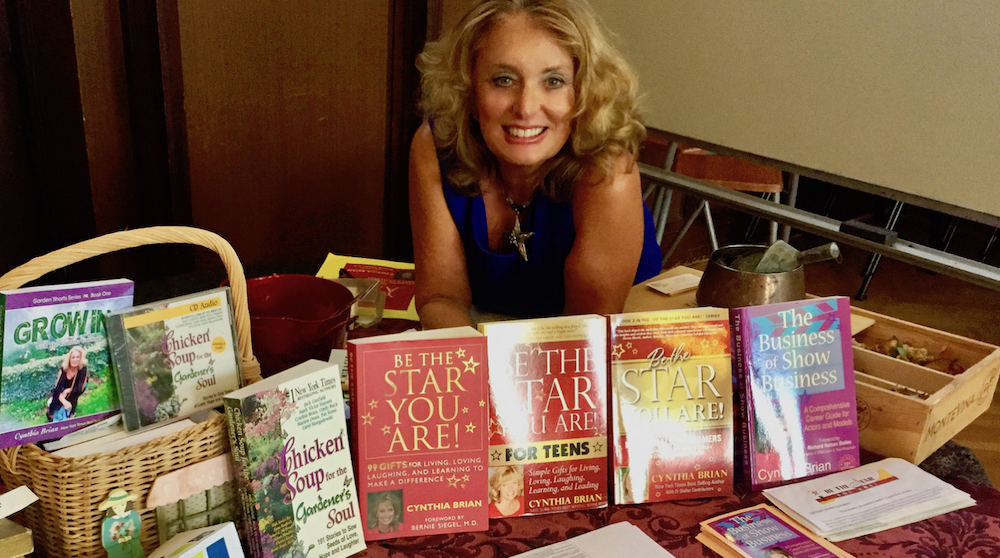 . Proceeds benefit the literacy charity empower women, families, and youth, Be the Star You Are!® 501 c3 (www.BetheStarYouAre.org)
. Proceeds benefit the literacy charity empower women, families, and youth, Be the Star You Are!® 501 c3 (www.BetheStarYouAre.org)
You will receive many additional gifts with every purchase.
Birdscape your garden by growing a bird-friendly sanctuary with berry-producing floras that birds will love. Wander in a winter wonderland of wildlife and have a berry, merry Christmas…with the birds!
Blessings to all and a ho, ho, ho!
Photos and more: https://www.lamorindaweekly.com/archive/issue1522/Digging-Deep-with-Goddess-Gardener-Cynthia-Brian-A-berry-merry-Christmas-mostly-for-the-birds.html
Happy Gardening. Happy Growing. Happy Holidays!
Cynthia Brian, The Goddess Gardener, is available for hire to help you prepare for your spring garden. Raised in the vineyards of Napa County, Cynthia is a New York Times best-selling author, actor, radio personality, speaker, media and writing coach as well as the Founder and Executive Director of Be the Star You Are!® 501 c3. Tune into Cynthia’s StarStyle® Radio Broadcast at www.StarStyleRadio.com.
Buy copies of her books, including, Chicken Soup for the Gardener’s Soul, Growing with the Goddess Gardener, and Be the Star You Are! www.cynthiabrian.com/online-store. Receive a FREE inspirational music DVD and special savings.
Hire Cynthia for writing projects, garden consults, and inspirational lectures.
Cynthia@GoddessGardener.com


